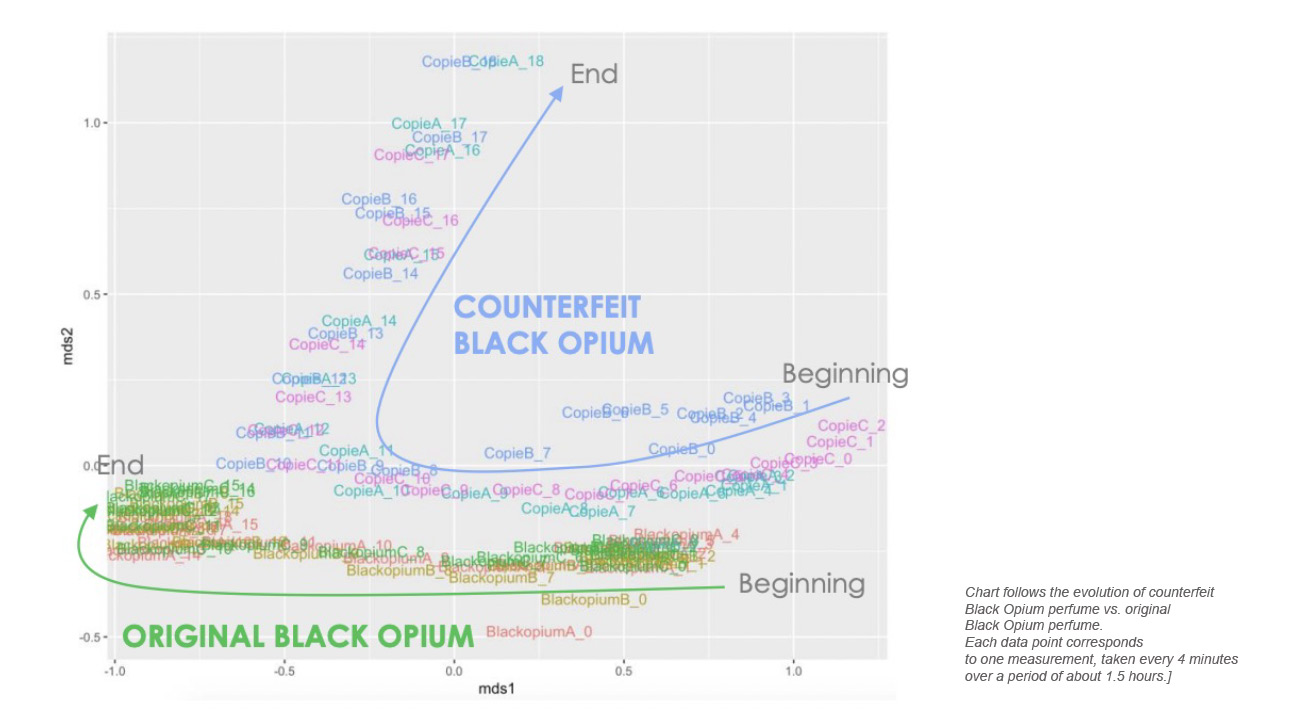Have you ever sprayed a perfume or noticed a particular scent that brought you back to a past memory? Whether you associate the smell with a special event or moment, scents can have a strong, lingering effect on your everyday life. Because of this, fragrances – specifically perfumes – play an important role in influencing and satisfying a shopping experience. Whether it’s vanilla scented hand lotion or your favorite fall candle, we often look to scents to help meet our personal preferences, as well as our emotional and functional needs.
As fragrances evolve after they are sprayed, however, they transform in both intensity and odor character – fine fragrances are especially delicate and complex. The good news is that digital olfaction technologies exist to allow for a better understanding of fragrance and odor data involved.
Fragrance consistency challenges
Fragrance consistency can be divided into two factors: evolution and perfume stability. Evolution is the “immediate moment” after a perfume is sprayed and speaks to how the scent unfolds. This process can be seen when identifying the different types of notes in a perfume. The top notes are referred to as opening notes because these are the first to be recognized when sprayed. They are also the lightest notes, so it’s the first scent to fade. This leads into the heart or middle notes where the core of the perfume lies. At this moment, new scents come forward as the top notes evaporate. Base notes appear at the end of a perfume’s evolution. They deepen and tie together the overall fullness of the scent, and comprise most of the perfume scent duration.
Perfume stability can be defined as the “longer term moment” of how a perfume ages in both in the bottle and in the pump. The majority of today’s consumers expect consistent evolution and stability, especially if they are already accustomed to a particular scent. This can be a challenge for manufacturers as outside factors necessitate changes to an existing product formulation and new compounds are being used/introduced in perfume composition that are not as well known, or even as stable as their previous counterparts. These had to be removed from perfumes due to supply chain disruption; climate change making them less available, or different from year to year; or through stricter regulations prohibiting the use of certain substances due to the allergenic potential. So, where does digital olfaction come into play?
How digital olfaction can help manufacturers
In perfume, product research and testing is key to ensuring the most consistent consumer experience. With digital olfaction technology – given its ability to mimic the human sense of smell – organizations can streamline and augment both of these processes.
In the research and development (R&D) field, digital olfaction technology, like Aryballe’s NeOse Advance, helps better inform the development of perfumes that unfold correctly. Labs can use Aryballe’s technology to test new ingredients and compounds to ensure they behave similarly over time to the “standard” ones before they are incorporated into the actual product and manufactured. This gives brands the data and knowledge needed to develop more consistent fragrances from the onset, especially during reformulations.
Once a product is ready to be made, digital olfaction technology can first test ingredients going into production tanks to ensure they are still in good condition/not oxidized. Then once a product is produced, digital olfaction can be leveraged as part of the quality control process by providing an evaluation of a fragrance over time. This involves monitoring how the scent transforms and unfolds from the first spray to a few minutes after the application and throughout the day, and as it moves from the top to heart to base notes. Aryballe can trace the intensity and signature of the fragrance as it evolves through these phases to ensure consistent and stable products. This can be especially helpful when detecting counterfeit products; as you can see in the chart below, the counterfeit version of Black Opium perfume evolves much faster than the odor of the genuine product.

Digital olfaction also provides an objective analysis of a fragrance that is more consistent than a subjective human panel. In the past, many brands have leveraged consumer testing through human panels to screen odors. However, challenges around panel consistency, olfactory fatigue (diminished sensitivity to all odors) and other personal subjectivities have highlighted the need to incorporate technologies like digital olfaction to help augment the testing process and produce more consistent results.
The opportunities for digital olfaction in the perfume and fragrance industry are exciting and ever-evolving. Read more about the use case here.

